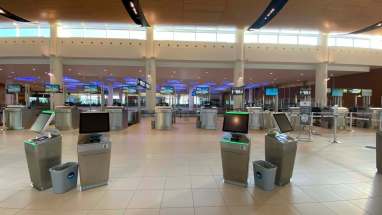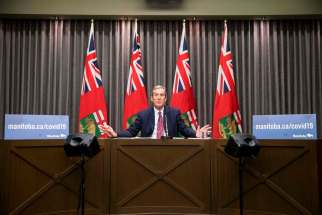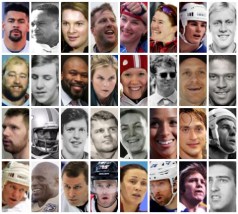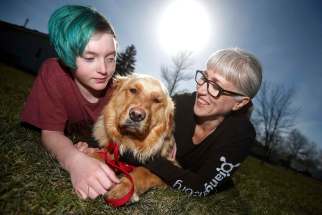Armed with new data, First Nations brace for COVID-19 first wave
Read this article for free:
or
Already have an account? Log in here »
To continue reading, please subscribe:
Monthly Digital Subscription
$0 for the first 4 weeks*
- Enjoy unlimited reading on winnipegfreepress.com
- Read the E-Edition, our digital replica newspaper
- Access News Break, our award-winning app
- Play interactive puzzles
*No charge for 4 weeks then price increases to the regular rate of $19.00 plus GST every four weeks. Offer available to new and qualified returning subscribers only. Cancel any time.
Monthly Digital Subscription
$4.75/week*
- Enjoy unlimited reading on winnipegfreepress.com
- Read the E-Edition, our digital replica newspaper
- Access News Break, our award-winning app
- Play interactive puzzles
*Billed as $19 plus GST every four weeks. Cancel any time.
To continue reading, please subscribe:
Add Free Press access to your Brandon Sun subscription for only an additional
$1 for the first 4 weeks*
*Your next subscription payment will increase by $1.00 and you will be charged $16.99 plus GST for four weeks. After four weeks, your payment will increase to $23.99 plus GST every four weeks.
Read unlimited articles for free today:
or
Already have an account? Log in here »
Hey there, time traveller!
This article was published 15/05/2020 (2032 days ago), so information in it may no longer be current.
Manitoba has learned for the first time how COVID-19 has impacted First Nations citizens in the province.
For the first weeks of the declared pandemic — even though many (including the federal government) knew First Nations would be disproportionately impacted — the province did not collect data on Indigenous cases.
COVID-19 more severe for First Nations people
Posted:
COVID-19 is spreading faster among First Nations people in Winnipeg and making them more sick, according to the first release of data on Indigenous people in Manitoba.
This changed after a late-March agreement with health officials from the Assembly of Manitoba Chiefs, as the province began to ask patients testing positive for the novel coronavirus to voluntarily self-identify as First Nations or not.
Armed with data collected since April 3, Manitoba officials provided the information to AMC on Friday. The report, introduced by Dr. Marcia Anderson (a University of Manitoba professor and Anishinaabe-Cree) in an online presentation, is as good news as any in a pandemic.
Out of 289 positive cases of COVID-19 in the province, 16 are First Nations individuals (14 are recovered and two are active cases).
That’s about 5.5 per cent — about half the proportion of First Nations people in Manitoba.
None are on-reserve residents; all positive cases are off-reserve members, most of whom live in Winnipeg.
The provincial self-disclosure request does not ask which community they come from, just if they are First Nations. The disclosure also doesn’t request any proof of First Nations status.
It is not known how many individuals disclose they are Métis or Inuit. The province has vowed to forge similar information sharing agreements with those groups in the future.
This all leads to more questions then answers, but let’s deal first with the facts.

Some reflect Manitoba-wide data, such as the most common age of First Nations positive cases is between 20 and 29 years old, and most contracted the infection from other individuals (27 per cent came through travel).
The “secondary attack rate” for First Nations cases (when an infected person infects others through contact) is double the rate of other Manitobans (around 30 per cent) — an unsurprising fact considering First Nations homes often have more people and poverty than others.
The hospitalization rate of infected First Nations individuals is also double the rate of other Manitobans, suggesting a similar trend as seen in the 2009 H1N1 pandemic, when the sickness impacted First Nations worse and led to more deaths than in other racial groups.
An interesting statistic though is 13 of the 16 First Nations cases are females — a significant difference to Manitoba, where the gender split is roughly half.
This may mean First Nations women are risking their lives at the front lines of the sickness — as caregivers, nurses, and advocates in infected areas (homes, hospitals, essential services) — proportionately more than others.
Perhaps the most interesting fact shared by Anderson was: “Since April 3, it does seem that the proportion of First Nation cases is getting higher” and health measures in First Nations have “delayed the onset of COVID-19 in our communities, not eliminated it.”
“Since April 3, it does seem that the proportion of First Nation cases is getting higher.” – Dr. Marcia Anderson
This means the first wave of COVID-19 hasn’t even yet started in most Manitoba First Nations.
“Our communities have been successful,” AMC Grand Chief Arlen Dumas said, “but it’s just a matter of when.”
This means testing, information, and maintaining safety protocols on First Nations is more important than ever.
While the report states there have been 1,488 tests for COVID-19 at First Nations sites, it’s unknown how many First Nations people have been tested off-reserve (the province doesn’t record this).
Setting aside the statistical and cultural issues with Manitobans self-disclosing Indigenous identity for a moment, the lack of accounting of Métis and Inuit cases and the inherent issues with governmental reporting suggests more tracking is needed, not less.
This echoes a nation-wide malaise with tracking COVID-19 on First Nations.
In a damning report this week by the Indigenous-led think tank Yellowhead Institute, researchers found statistics kept by Indigenous Services Canada of positive COVID-19 cases on First Nations are porous, faulty, and “don’t provide the whole picture.”
While ISC has been reporting 175 cases in 634 reserve communities in Canada (leading to two deaths), Yellowhead researchers found the number is closer to 465 in just 42 communities (leading to seven deaths).
This suggests governments across the country aren’t doing a capable job tracking the sickness. Hyper-vigilance is needed to stop the spread.
In this vein, the province and AMC will now distribute First Nations statistics each Friday.
Now is not the time to rest, but prepare for what’s to come. The curve may be flattened in Manitoba, but for First Nations, it’s just beginning.
niigaan.sinclair@freepress.mb.ca

Niigaan Sinclair is Anishinaabe and is a columnist at the Winnipeg Free Press.
Our newsroom depends on a growing audience of readers to power our journalism. If you are not a paid reader, please consider becoming a subscriber.
Our newsroom depends on its audience of readers to power our journalism. Thank you for your support.






